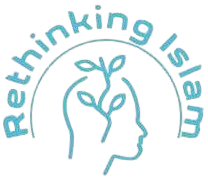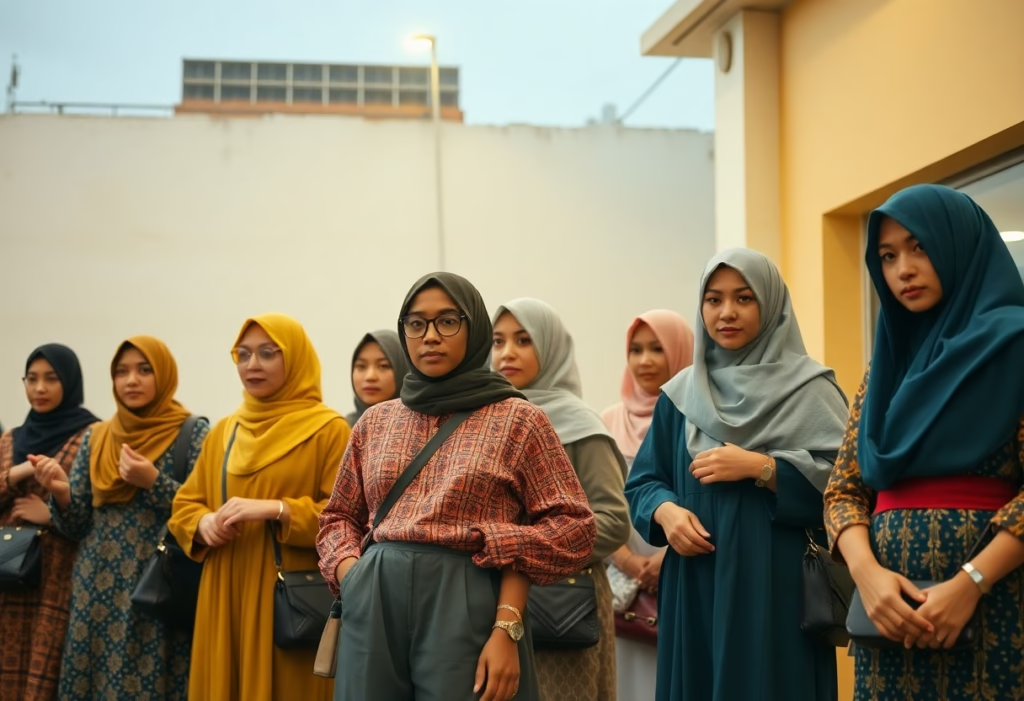Dress expectations often define how you express yourself and relate to societal norms, but it’s time to explore modesty beyond mere clothing choices. In this blog post, you’ll discover how modesty encompasses a broader spectrum, touching on values, cultural perspectives, and personal empowerment. By understanding the deeper significance of modesty, you can reshape your approach to how you present yourself and celebrate individuality while respecting your beliefs. Join us as we investigate into a more inclusive perspective on modesty that goes beyond the surface.
The Evolution of Modesty: A Historical Perspective
The concept of modesty has transformed significantly across cultures and eras, mirroring shifts in social structures, religious beliefs, and individual freedoms. Historically, modesty dictated not only how one dressed but also how one interacted in public and private spaces. For centuries, various societies enforced rigid standards of behavior that affected both men and women, signaling virtue, decorum, and respectability. Over time, these definitions were challenged, reflecting broader changes in attitudes toward gender, power, and self-expression.
Cultural Definitions and Shifts
Different cultures have produced distinctive interpretations of modesty, often blending religious doctrine with local customs. For instance, in some Middle Eastern societies, covering the body is a sign of cultural pride and spirituality, whereas Western societies have often associated modesty with morality and restraint. These definitions are not static; they’ve shifted through colonization, globalization, and feminism, impacting how you perceive and engage with modesty today.
From Ancient Norms to Modern Interpretations
Tracing the journey from ancient norms to contemporary views reveals a rich tapestry of change. In ancient Rome, for example, modesty was linked to one’s social status, with the upper class dressing more lavishly while lower classes adhered to simplicity. Today, you encounter a broader spectrum of modesty, often influenced by personal choice rather than dictated by societal structures. The rise of body positivity movements also redefined modesty, promoting the idea that your body, your choices, should dictate how you express yourself, regardless of traditional standards.
Ultimately, the transition from ancient norms to modern interpretations highlights an ongoing dialogue about autonomy and expression. The introduction of platforms like social media provides a venue for sharing diverse perspectives on modesty, fostering acceptance of various styles and the reasons behind them. You are now more empowered than ever to redefine what modesty means for you, breaking away from conventions to embrace individuality in your clothing choices. As these cultural shifts continue to unfold, your understanding of modesty will evolve, reflecting broader societal changes and personal growth.
The Psychological Impact of Modesty Standards
Modesty standards significantly influence your mental well-being and self-worth. Adhering to these norms can create a constant tension between societal expectations and personal identity. This tension may lead to feelings of inadequacy, anxiety, or even depression when you believe you aren’t measuring up. The pressure to conform can exacerbate internal conflicts, making it challenging to cultivate authentic self-expression. Instead of celebrating individuality, modesty standards can restrict your personal growth and self-discovery, leading to a disconnected relationship with your own body and identity.
Self-Perception and Body Image
Your self-perception and body image are greatly affected by the messages surrounding modesty. If society equates modesty with virtue, you might internalize the idea that your worth is tied to how you dress. This can lead to negative body image—you may feel uncomfortable or ashamed of your appearance, even if it doesn’t align with your true self. In contrast, fostering a sense of personal style and confidence in your body can liberate you from these constraints, enabling you to embrace your identity more fully.
The Role of Society in Shaping Individual Beliefs
Society plays a pivotal role in shaping your beliefs about modesty through cultural narratives, media representations, and community values. These external influences can create a framework for how you view yourself and others in relation to modesty. For instance, research shows that individuals exposed to pervasive images of modesty linked to virtue often struggle with their self-image and self-worth. A study published in the Journal of Social Psychology found that women who subscribe to traditional modesty norms reported significantly lower body satisfaction and increased feelings of anxiety. By challenging these societal standards, you can begin to redefine your beliefs, prioritize personal comfort, and pave the way for healthier self-acceptance.
Beyond Clothing: Modesty in Communication and Behavior
Modesty transcends clothing; it encompasses how you communicate and interact with others. Your words carry weight and can either uplift or undermine your message. Approaching conversations with humility and respect fosters an environment of understanding. Practicing active listening and being mindful of your body language demonstrates confidence without arrogance. Each interaction offers an opportunity to express modesty through your demeanor and choice of words.
The Power of Words and Non-Verbal Signals
Language shapes perceptions. When you articulate your thoughts with clarity and kindness, you exhibit modesty that resonates beyond your attire. Using thoughtful vocabulary not only conveys respect for others but also directs conversation towards constructive dialogue. Non-verbal cues such as maintaining eye contact and using open body language signal your sincerity and willingness to engage, reinforcing your commitment to modesty in communication.
Modesty in Professional Environments
In a professional setting, modesty can significantly enhance your credibility and relationships. Adopting a balanced demeanor involves being confident yet approachable. Avoiding boastfulness while sharing your achievements fosters teamwork and collaboration. Moreover, studies show that organizations with a culture of humility perform better; they are characterized by higher employee engagement and lower turnover rates, highlighting the importance of modesty as a potent tool for workplace harmony and productivity.
The Intersection of Modesty and Identity
Understanding modesty requires delving into its multifaceted relationship with identity. Your sense of modesty is often shaped by deeply personal experiences and social contexts, including cultural background, gender, age, and socio-economic status. As you navigate various environments, modesty may evolve based on how you view your own identity and the messages society conveys about body image, self-expression, and dignity. This dialogue between personal integrity and external influences raises important questions about how you define yourself in relation to societal norms concerning modesty.
Personal Choice vs. Societal Expectations
Defining modesty often involves balancing your personal choices with the expectations imposed by society. While some individuals feel empowered to express themselves through a variety of styles that may not traditionally align with modest dress, others may find their definitions shaped by their community’s values. This tension can lead to self-exploration where you examine whether your choices reflect your inner beliefs or merely conform to societal pressures. Ultimately, it illustrates the complex dance between honoring your identity and navigating communal standards.
The Role of Faith and Spirituality in Defining Modesty
Your interpretation of modesty can be significantly influenced by faith and spirituality. Many religious teachings advocate for principles of modesty as expressions of humility, purity, and respect for oneself and others. For instance, Islamic guidelines emphasize covering the body as a form of devotion, while Christian teachings often convey modesty as an expression of inner beauty rather than outward appearance. Understanding these spiritual frameworks can deepen your appreciation of how various belief systems contribute to an individual’s approach to modesty. Engaging with these teachings offers a broader perspective that can resonate with your personal practice of modesty.
Faith and spirituality provide a rich tapestry of understanding around the concept of modesty. Each belief system carries unique perspectives that shape how you view your body and its presentation to the world. For example, in Hinduism, the concept of akhanda, or wholeness, informs modesty as a means of honoring the self and the divine. In comparison, Buddhist teachings might emphasize simplicity and mindfulness in one’s attire as a reflection of detachment from materialism. These varying interpretations invite you to reflect on how your spiritual beliefs intertwine with your identity and influence your decisions around modesty, be it in dressing or behavior. This exploration can help ground your sense of self in a larger context, promoting a more thoughtful consideration of how modesty intersects with your unique journey and values.
Rethinking Modesty in the Age of Social Media
Social media has transformed how you perceive and express modesty. With platforms highlighting curated lifestyles and selective self-presentation, your understanding of modesty can easily become muddled. As you navigate this digital landscape, it’s vital to discern the difference between authentic self-expression and the pressure to conform to trending ideals. The visibility factor complicates modesty; while it offers an opportunity for diverse representations, it can also amplify unrealistic standards that dictate how you should present yourself to the world.
The Double-Edged Sword of Visibility
Visibility through social media serves as a powerful tool for self-expression but also comes with its limitations. You may find that the very platforms designed to empower your voice can also create an environment rife with comparisons and criticism. When you share your modest choices online, you risk exposure to judgment and potentially harmful feedback, which can distort your perception of worth and self-image. Striking a balance between expressing your unique identity and managing the scrutiny from others is necessary to maintaining a healthy relationship with your self-representation.
Redefining Authenticity in a Digital World
Authenticity in the digital world is a constantly shifting concept that challenges you to confront traditional notions of modesty. Social media often presents an idealized version of reality, compelling you to question what it means to be genuine. You may find that embracing your true self requires vulnerability, yet curating your online persona can lead to a disconnect from your authentic self. Understanding your own values and applying them consistently in your content—beyond seeking likes or validation—can help redefine what authenticity means for you in this hyper-connected landscape.
To genuinely represent yourself online, consider what aspects of your life reflect your values and the modesty you choose to embody. Instead of engaging in trends that don’t resonate with you, explore how your unique experiences can inform your online presence. Authenticity doesn’t mean presenting yourself without filters; it means creating a dialogue that aligns with your beliefs. Initiatives like #BodyPositivity and #RealLifeStyle directly counter superficial portrayals of modesty, allowing you to contribute to meaningful conversations. By sharing your perspective, you create a narrative that empowers others to embrace their individuality, enhancing the collective understanding of modesty in today’s world.
Final Words
Now that you’ve explored the multifaceted nature of modesty beyond mere dress codes, it’s crucial to recognize how your choices reflect personal values, cultural identity, and empowerment. Embracing modesty is not merely about covering up but about expressing yourself authentically in ways that honor your beliefs and individuality. By understanding these dimensions, you can make informed decisions that align with your sense of self and community, ultimately contributing to a broader conversation about self-expression and respect in society.


